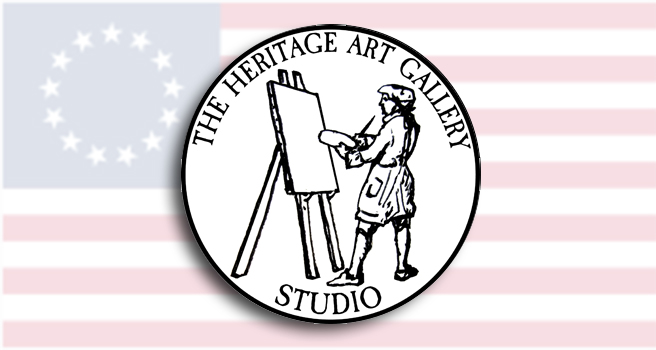ISAIAH THOMAS
Revolutionary War Patriot and publisher of the Massachusetts Spy newspaper.
Boston, 1775
The events of Isaiah Thomas’s activities in Boston between 1770 and 1775, relating to the developments of the American Revolutionary War, were imagined in these paintings by David Wells Roth. This series was commissioned by the historic landmark The Union Oyster House, in Boston and are displayed in the Heritage Room. The images of the paintings were made into prints with a description describing these events.
Each print is signed by the artist.
![]()
A Tribute to Isaiah Thomas.Set of 6 Giclee prints, 19 x 13 inches. Cat. no. 1137 |
Full set of 6 prints of the Isaiah Thomas print series. By purchasing this complete series, the cost of each print is discounted by 30%.
A Tribute to Isaiah Thomas.Giclee print, 19 x 13 inches. Cat. no. 1131 |
The text within the print:
It was partially through his newspaper, 'The Massachusetts Spy', and a host of his other publications that many of the colonists in New England learned the facts of the oppressive conditions imposed upon them by the ruling British authorities. More than once, Thomas risked his life to inspire these notions to his fellow patriots through his printing. Because of the numerous gatherings of founding patriots and writings that were bold challenges to the British ruling authority, this print shop earned a deserved reputation as "The Sedition Foundry."
A Tribute to Isaiah Thomas.Giclee print, 19 x 13 inches. Cat. no. 1132 |
The text within the print:
Between the years of 1770 - 1775, Isaiah Thomas ran his printing office from the corner of Union Street and Marshall Lane in Boston. It was called by the British authority, "The Sedition Foundry", because of the rebellious people who gathered there and mainly the newspaper he printed there called "The Massachusetts Spy". Depicted here is Isaiah Thomas, at his press "The Old No. 1" and some of the people involved in the paper, notably, John Hancock, seated to his right and Paul Revere seated near the fireplace.
A Tribute to Isaiah Thomas.Giclee print, 19 x 13 inches. Cat. no. 1133 |
The text within the print:
Funded by John Hancock, Isaiah Thomas started to shift his newspaper’s editorial political views from “neutral and open to all parties” to supporting only the side of the patriots, thus openly attacking the British authorities. November the 14th, 1771, under the pseudonym of Mucious Scaevola a writer for Thomas, Joseph Greenleaf, wrote a scathing article attacking Governor Hutchinson, the acting Governor of Boston at that time. Thomas was then summoned to appear before the Provincial Council, but refused to go due to “pressure of business”
A Tribute to Isaiah Thomas.Giclee print, 19 x 13 inches. Cat. no. 1134 |
The text within the print:
Late into the night on April the 16th, 1775, Isaiah Thomas dismantled his printing office, and with the help of Dr. Warren and Timothy Bigelow (a Worcester Whig) sent his press and types by ferry across the Charles River to Charles Towne and then to Worcester where they have been preserved in The American Antiquarian Society, later established by Isaiah Thomas in 1812.
A Tribute to Isaiah Thomas.Giclee print, 19 x 13 inches. Cat. no. 1135 |
The text within the print:
On April 19th, before dawn, Isaiah Thomas and fellow revolutionary, Dr. Joseph Warren, crossed the Charles River to Charlestown. There they met with other revolutionaries, and then Thomas “hastened to Lexington where, according to one of his friends, he joined the militia at daybreak”.
The view is from the Charles River, north of Boston looking east with Mill Pond on the right. Across Mill Pond, through the dawn mist is Faneuil Hall. In the center foreground is Gee’s ship building yard, and beyond that is the steeple of Old North Church and the windmill of Corps Hill. On the horizon, British warships are poised for the impending invasion.
A Tribute to Isaiah Thomas.Giclee print, 19 x 13 inches. Cat. no. 1136 |







